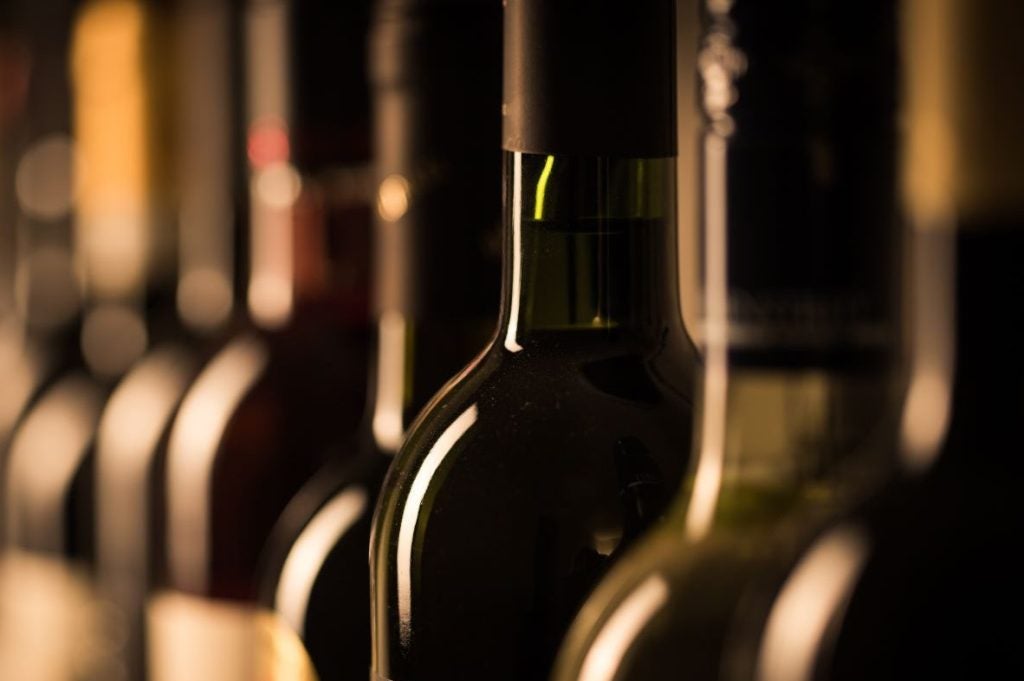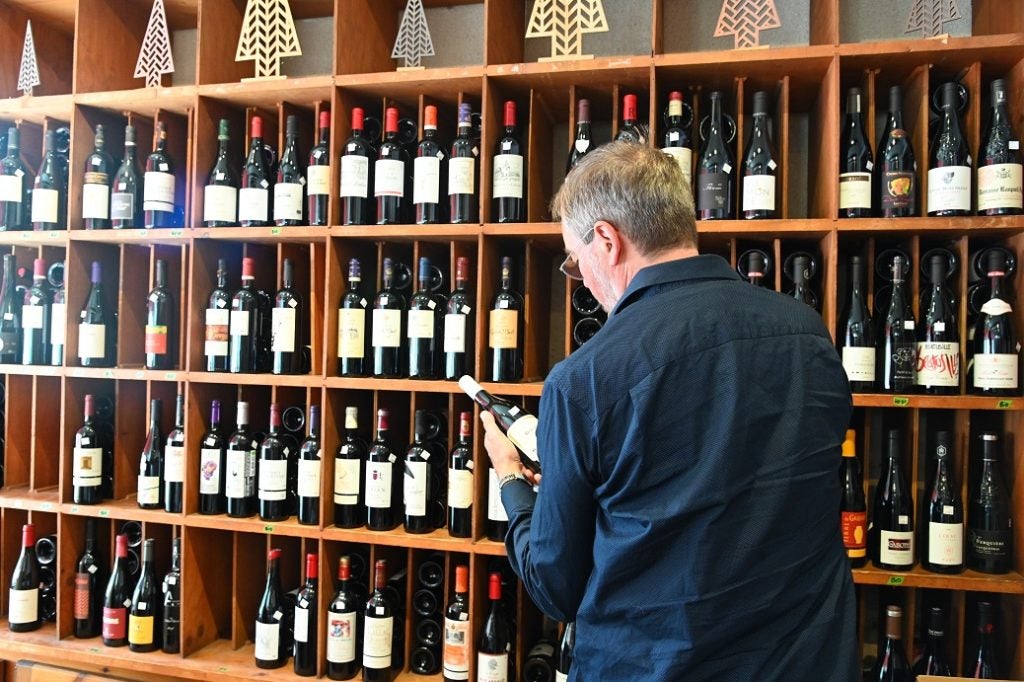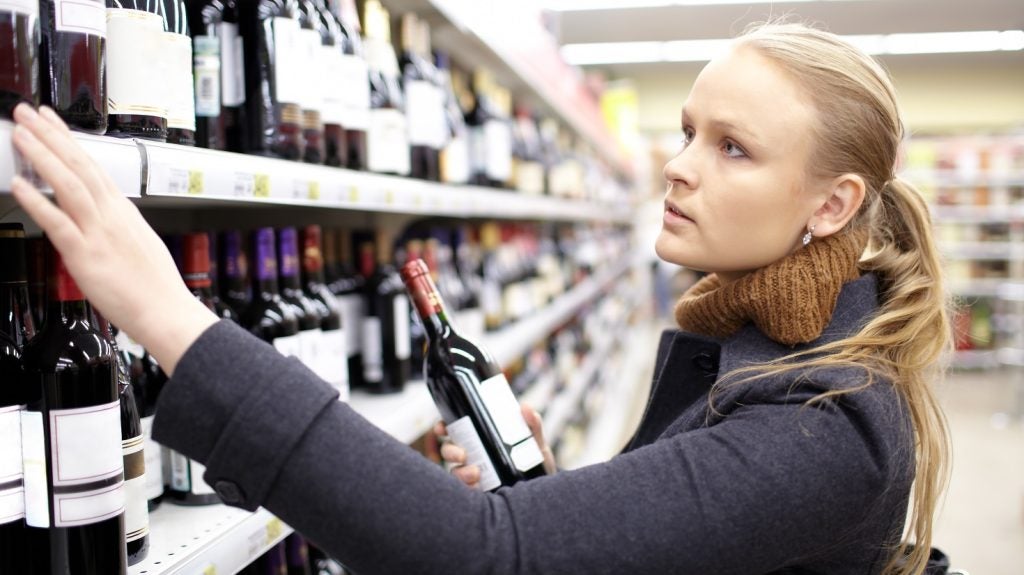For more than a decade, wine has been exempted from needing to declare nutrition and ingredient content at the point of purchase in the EU. From 8 December 2023, this relief comes to an end as Brussels will require the energy, nutrients and ingredients to be present on the label of all wines produced in and sold to the bloc.
The regulations apply to any product classified as “wine” by the EU. This includes sparkling, fortified, dessert, aromatised, as well as “de-alcoholised wine products”. The full ingredients list must display grapes, additives, processing aids, sweetening and enrichment substances, as well as liqueur de tirage and d’expedition (solutions added in sparkling wine production).
Nutritional declarations will need to show an “energy value”, using a kilojoules and kilocalories per 100ml format and the widely recognised “E” symbol. Information on the quantity of fats, saturates, carbohydrates, sugars, protein, and salt in a wine must also be included. Energy, alcohol content and allergens must all be visible on the labels.
Producers have the choice to display the remaining information on- or off-label with a link or QR code, so long as it directs the buyer to a third-party site free from marketing and sales details, as well as consumer data collection or tracking.
Too little too late
With the deadline for updated labels fast approaching, finer details in the rules have been delivered to the sector in a sporadic manner to say the least.
The law has been updated multiple times since it was first passed in 2021. Earlier in May, clarification was given around disclosing information on additives, noting that the ingredients list should be exhaustive, including any ingredients that may potentially be added in production, even if they aren’t present in every single bottle produced.

At the end of July, the EU made its latest change, amending the legislation from applying to wine “produced and labelled” on 8 December to solely “produced” on or after this date.
This month, the Commission made another adjustment, stating that the use of the symbol ‘i’ to signify ‘information’ is “not sufficient” for use on labelling, as it does not make the contents of the product clear.
It also said that where the content of the QR code refers to a product’s ingredients, “a heading… must be used, in the same way as the current practice used for the paper labels for other food (i.e. containing the word ‘ingredients’).”
The update has been heavily critiqued by European trade body Comité Européen des Entreprises Vins (CEEV) which argues that it brings new “uncertainty regarding the linguistic regime to be applied”.
It also added that in order to be prepared, many winemakers already decided to use the registered ISO 2760 ‘i’ symbol, the organisation said, due to it being globally recognised as standing for ‘information’.
Adapting to legislation change isn't easy if producers aren't given enough information on time, adds Neil Dyas, head of technical at UK-based importer Bibendum Wine. “These little nuances make a big difference from a producing point of view in terms of getting the label made and making sure you comply”, he explains. “This [latest update] has the potential to be a significant headache for suppliers due to the late notice of this decision with many labels already having been printed."
You’ve got to call into question the fact that by July this year the EU hadn’t decided what an ingredient was.
Matthew McCulloch, Langmeil Winery
Some producers have also criticised the last-minute revisions. “I think you’ve got to call into question the fact that by July this year [the EU] hadn’t decided what an ingredient was”, says Matthew McCulloch, managing director at Langmeil Winery in South Australia. While he admits adjusting to the rules is “not a drama” for the winery, he emphasises “a little bit more time would have been great.”
Pressure on non-EU producers
A lack of clarity could burden non-EU producers the most as they may not be as aware of the fast-changing rules as winemakers within the bloc. “This is not something they’ve ever had to do,” explains Dyas, “so it’s been a learning curve for them as well as us to try and understand how we meet these requirements.”
Like Bibendum, global trade bodies have been working to prepare their producers as much as possible. Wine Australia and New Zealand Winegrowers have delivered support through regularly updated guidance, newsletters and webinars but both agree a definitive explanation of the rules is needed soon.
The International Organisation of Vine and Wine (OIV) has also offered advice through virtual workshops, one of which took place earlier this month. The webinar intended to “inform and train the sector on the main current problems and challenges”, says Alejandro Fuentes Espinoza, head of the economy and law unit at OIV. “It is true that the law is not completely defined and we will not have all the elements. However, we will try to address the main aspects.” With the deadline for compliance happening less than a month later, this cuts things fine for producers that need to make the necessary changes.
Clear and up-to-date information is especially urgent for southern hemisphere producers, who have shown “eagerness for information”, says Ned Hewitson, legal counsel at Wine Australia. While the production of vintages in North America, Europe or the UK won’t start until next August or September, he explains Australian producers will be starting their output much sooner. “We’ll be crushing grapes here in January,” he says, “which means with the effective commencement date of 8 December 2023, these requirements will be right onto us quite quickly”.
The opportunities to capture
Besides the difficulties surrounding various parts of the labelling legislation, producers don’t seem to see the changes as a huge barrier.
Johan Reyneke, owner of South African biodynamic winery Reyneke Wines has been working with the German company Bottlebooks to develop the brand’s new labels. Local chemical analysis company Vinlab also helps the winery measure the alcohol and residual sugar content in its product, which Reyneke needs to generate the energy and nutritional value for the wine labels. Having worked with third-party groups like Bottlebooks to develop labels since 2020 has of course helped Reyneke be more prepared for the upcoming regulation changes.
While he admits the label redesign and registering each product every year is extra work, Reyneke thinks “the negatives are not going to hinder sales” adding: “It comes withs small financial and administrative costs but I think it’s more transparent and forthcoming.”
Younger wine drinkers seem to be quite interested in doing proper research on the products they consume.
Johan Reyneke, Reyneke Wines
Reyneke also says the new legislation offers producers the chance to start adapting to changes in consumer habits and the increasing demand for transparency in what they purchase. He explains: “If you look at consumer demographics, younger wine drinkers seem to be quite interested in doing proper research on the products that they consume and support.”
Providing consumers more details on what’s in their drink doesn’t faze Langmeil Winery either. “What will show in [our] transparency is, there’s grapes, plus the yeast, maybe tartaric acid for adjustment to keep the wines fresh and focused, and then that’s it – maybe sulphur dioxide as a preservative,” McCulloch says.
If consumer interest in these new labels develops, some producers believe it may influence a greater shift to premium products. “[If] you get down to something cheap and cheerful which is overcropped and everything’s corrected and there’s all sorts of weird and wonderful things in there to cover this, then the consumer can lift that and go ‘you know what? I’m not so sure if I want to have a wine that contains egg, fish, milk, tannin, nuts, plus excessive acidity… or whatever it might be’,” McCulloch adds.

Growing demand for premium products could benefit smaller producers, according to Hewitson at Wine Australia. Upmarket winemakers, so the theory goes, would be able to use the new-look labels to their advantage in comparison to larger winemakers that use a much larger range of additives or processing substances to create blends. The caveat with this, Hewitson notes, is that a more commercial producer will be able to afford to hire employees to help them comply with the requirements, whereas not all small producers might be able to do the same. “It sort of cuts both ways,” he says.
A shift to higher-end wines could also be accompanied by greater demand for clean-label products. “I think quite a lot of consumers are going to consider wine to be a natural product, maybe free of any additives,” Bibendum’s Dyas says. He isn’t wrong. A November 2022 Wine Market Council survey of 1,000 wine consumers in the US revealed that the majority saw wine as having the smallest ingredients list in comparison to beer products. Whether EU consumers also share such opinions however remains to be seen.
If such an assumption gains prominence in the bloc, there is a risk of consumers pushing back about the use of certain ingredients, says Dyas. For example, with wines that require additional substances to remove faults like tartaric crystals that build up at the bottom of a bottle, if consumer complaints led to their removal, this could bring further criticism of the product if buyers aren’t comfortable with the fault, he explains. Despite these potential obstacles, he believes the positive outcome from having a full ingredients list on labels is that buyers can become “more engaged in the product.”
Where labelling might be headed elsewhere
It might be too soon to tell how much the EU’s wine labelling regulations will impact production or consumer buying decisions but it is worth noting the growing interest in developing similar labelling laws elsewhere in the world, and not just for wine.
In October, the Australia Medical Association and the Foundation for Alcohol Research and Education called on the country’s government to introduce front-of pack labelling displaying the health risks associated with excess alcohol consumption. Food Standards Australia New Zealand is running a consultation around the prospect of introducing nutrition claims onto alcoholic drinks including wine within similar standards to food and drink products.

According to Hewitson, the proposal suggests bottles include a simple “truncated nutritional information panel”, which would include information around energy content. Despite the move, he stresses that “it’s hard to see where that proposal might go”, adding “nothing formally on the horizon” was in place.
Other countries have been considering similar measures. In 2022, the US Treasury Department’s Alcohol and Tobacco Tax and Trade Bureau agreed to propose a similar legislation that would require the display of calorie, alcohol, and allergen content, for all wines, beer, and distilled spirits.
And in May this year, Ireland announced plans for mandatory health warnings on the labels of all alcoholic beverages – an idea not welcomed by several EU member states, including Italy, France, and Spain who called it a breach of single-market rules.
While policymakers show interest in nutrition and ingredient labels for alcoholic drinks, not all buyers are keen on the prospect. According to the Wine Market Council’s November 2022 survey, 38% of US consumers thought ingredients lists should feature on labels for wine, in comparison to over 40% who said the same for beer, 57% who said the same for hard seltzers and 60% for ready-to-drink cocktails.
Nevertheless, if labels are to truly impact future buying habits, some argue they must be more comprehensive. “The big change in labels that will change behaviours for the better will be clear warnings or information about the risks and dangers of alcohol or the benefits of cutting back,” explains Dr Richard Piper, CEO of the charity Alcohol Change UK. “It’s important to say these changes don’t include that.”
He describes the QR code system as “digitally excluding” for those who don’t have access to a smartphone or internet at the point of purchase. “It’s not about scare tactics,” he says, noting that the charity is against the photographic health warning display used on packaging for tobacco products. “I think we should base [the information] on high-quality research on the effectiveness of different messaging, and whether or not they increase public understanding.”
Next steps
Before considering any future development and increasing use of nutrition and ingredient labels for wine and other alcoholic drinks, what seems most urgent for producers is the release of a final set of clear guidelines. As McCulloch explains, developing a more standardised system for global producers would be especially useful now, given calculation methods for alcohol and sugar content in wine differ between countries, such as North America and the EU. “That’s where you would hope the [International Organisation of Vine and Wine] would step in and give expert advice as to what issues around alcohol [should be disclosed], and the potential additives and allergens”, he says.
According to Fuentes Espinoza, the OIV will refresh its international wine labelling standard in 2024 to include information on the inclusion of nutrition and ingredients. Alongside this update, he notes the organisation is developing “a practical guide to help producers around the world understand the main requirements that exist today in terms of labelling”. The guide will also be informed by each country’s own national organisations and how they inform their producers, he says.
Whether a globally standardised system for labelling can work in reality remains to be seen. Though McCulloch notes the idea is a bit of a “utopia”, he stresses it will be vital to avoid the “constant churn of additional information that may or may not be required” and deliver a sense of “clarity and agreement” to the industry.









